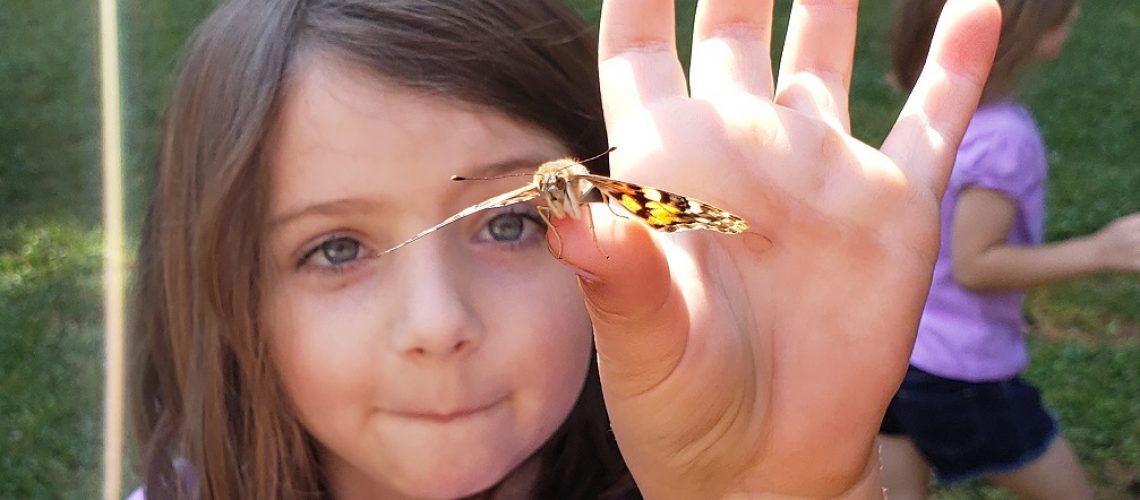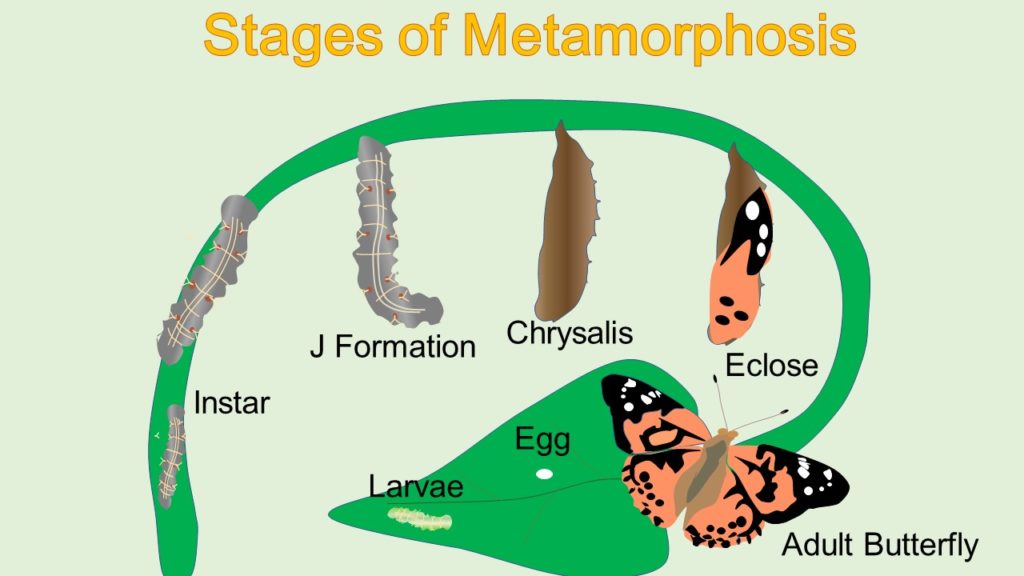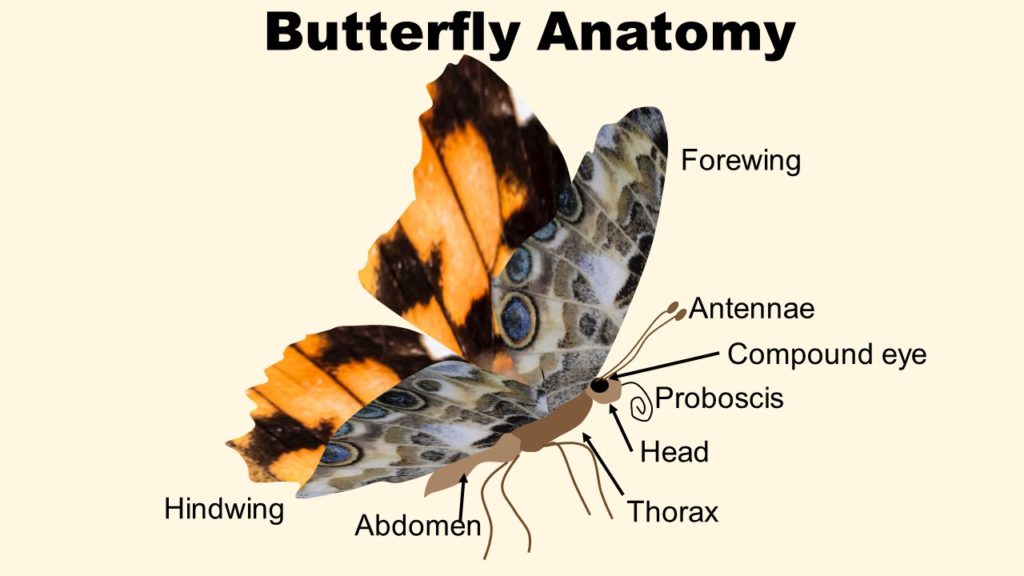We’re stuck at home, our kids are missing their friends, and we’re all craving the social interaction that we can’t have right now. It’s not surprising that people are turning to animal companionship to fill that void and give their kids a mood boost. In fact, many shelters are empty for the first time! But what if you can’t afford and/or take on a new pet? A butterfly kit is a great alternative and an excellent science activity!
What is a butterfly kit?
Butterfly kits come with everything you need to watch the process of butterfly metamorphosis. They even come with live caterpillars and the food you’ll need for them! You can order a kit from Amazon that comes quickly. There are quite a few on there and many have good reviews. This is the one we tried:

 from Amazon.
from Amazon.Note: As an Amazon associate, I may stand to profit from purchases made from this link.
When I received the kit, I had low expectations. Would living caterpillars not only survive, but successfully navigate the process of metamorphosis after being shipped across the country and kept in a container? Or would I end up consoling a couple of disappointed little kids should we end up with a container full of caterpillar corpses?
Amazingly, the kit was incredibly successful, and 9 of the 11 caterpillars in the kit successfully metamorphized into butterflies! Here’s how it went:
When the caterpillars arrived, they were only about half an inch long and skinny! They came in a container with food and directions that said to simply wait as they grow.

I put them on a shelf and left them, fully expecting to have to wait weeks for those little things to grow. But my girls avidly watched and suddenly, two days later, we glanced at the container and the tiny caterpillars had grown at least 10 times their initial size!

About 4 days later, they began to attach themselves to the lid of the container. This stage is called the J formation because they hook themselves like the letter J.
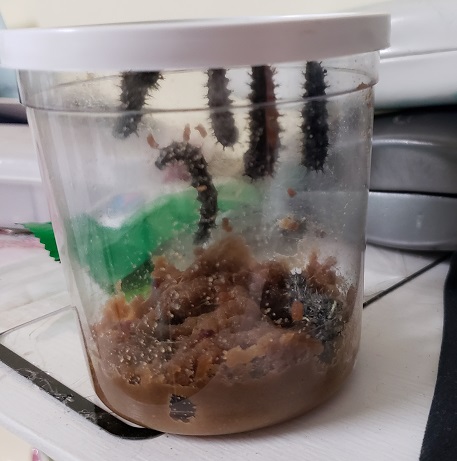
And then they quickly formed hard chrysalises! The kids were able to take them out and lightly touch them with no ill effects on the developing butterflies. Inside, the caterpillars underwent dramatic changes in just a short period of time.
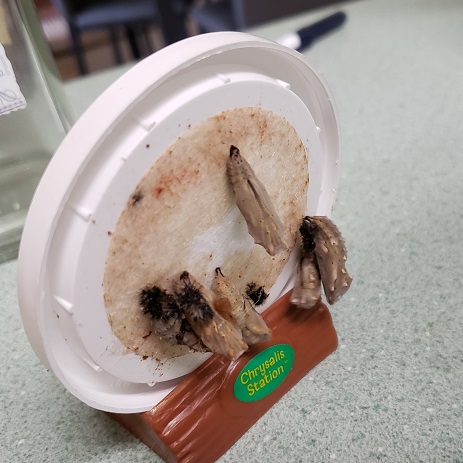
Within one more week, some beautiful Painted Lady Butterflies began to emerge. This process happened for all the caterpillars slowly over the course of two days, and the kids were able to actually watch the butterflies pull themselves out!
One of the chrysalises fell during this development period, and we were able to attach it back to the lid. However, this butterfly ended up developing abnormal wings. This obviously wasn’t ideal for the butterfly, but it did stimulate another science activity – an exploration of butterfly anatomy.
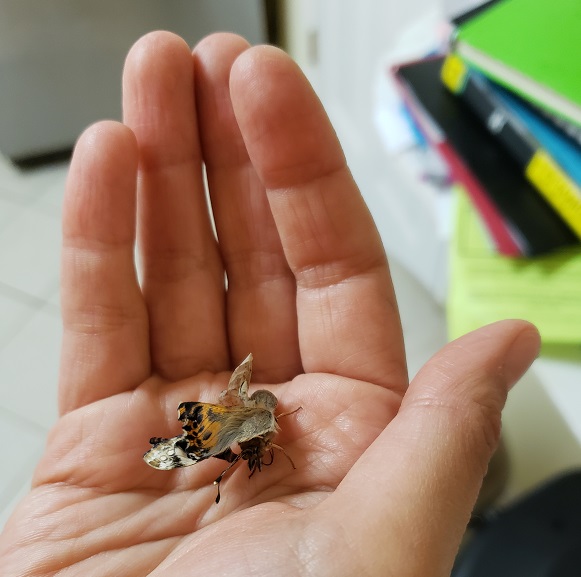
Once all of the butterflies emerged, it was time to release them!
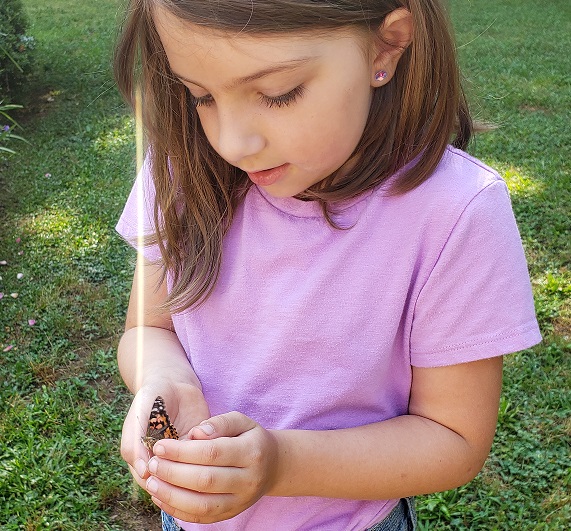
Painted Lady Butterflies are hardy butterflies and are the most widespread of all butterflies. They are found throughout the world! So, it is safe to release them almost anywhere. They will survive as long as the temperature is above 55 degrees Fahrenheit.
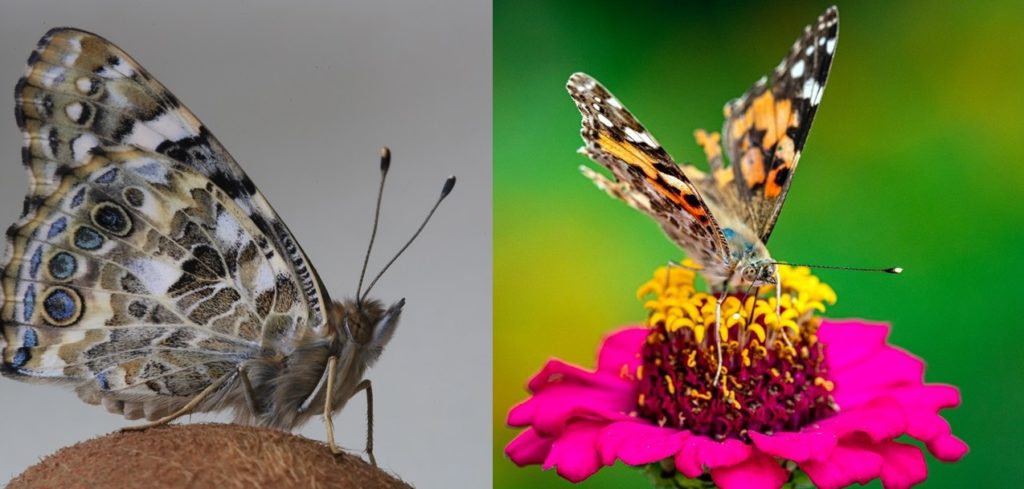
How can your kids best benefit from this kit?
This kit is an excellent science activity for kids. Both of my girls (4 and 7) felt truly invested in the caterpillars as they grew. They had temporary pets, and the best part was that I had to to little to nothing to take care of them! It gave us more than a week of excitement, and we all learned so much about the process of metamorphosis. Here’s what I recommend if you do this with your child:
1. Give your child(ren) a lab notebook to record their observations daily. This doesn’t have to be fancy. Any notebook will do. Check out these customizable lab notebooks available here on my site!
2. Show them the steps of metamorphosis before it happens so they know what to expect.
Click the image to download a free printable guide to the steps of metamorphosis that you can use:
3. Have them make drawings of the caterpillars (and eventually butterflies). Use a measuring tape or ruler to make daily measurements of the caterpillars. They can also draw the anatomy of the butterfly (and check that all parts are there).
Click the image to download a printable diagram of butterfly anatomy:
Your kids will learn so much about insects and metamorphosis without even realizing that they’re doing something educational!
Wrapping it up!
It turns out that a butterfly kit is an excellent science activity that not only keeps kids engaged for an extended period of time, but also makes them feel like they are taking care of a pet of their own. Studies show that taking care of something even as small as a fish or a plant (or in this case, a caterpillar) substantially decreases anxiety. Plus, it’s pretty fool proof and requires very little care from parents. Can’t beat that!
Stay tuned for more science activities for kids!
